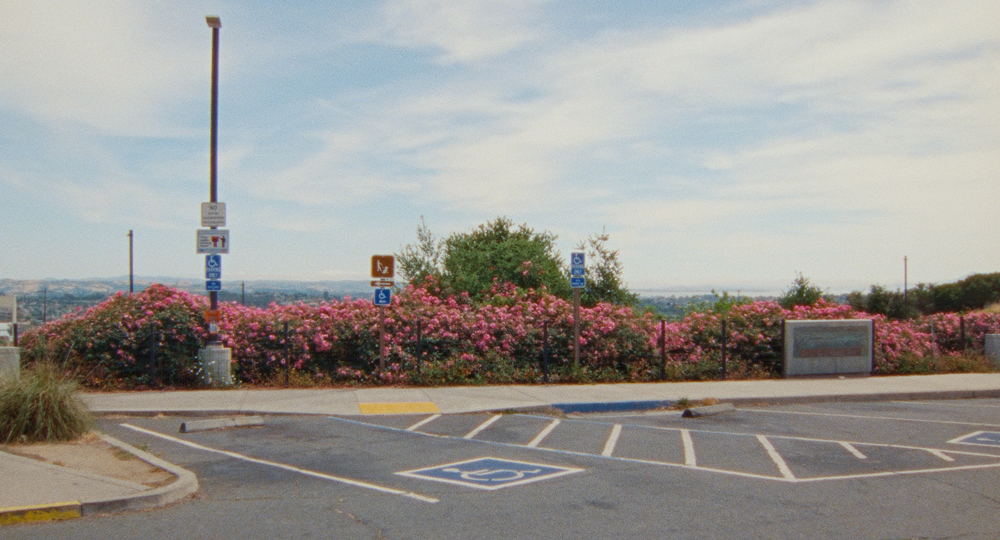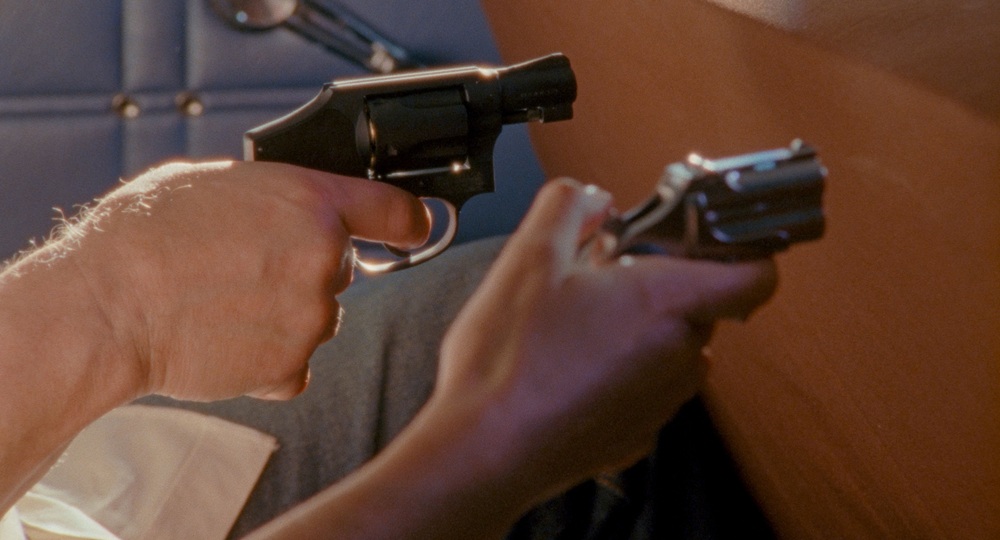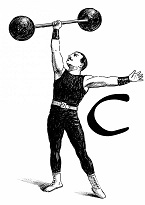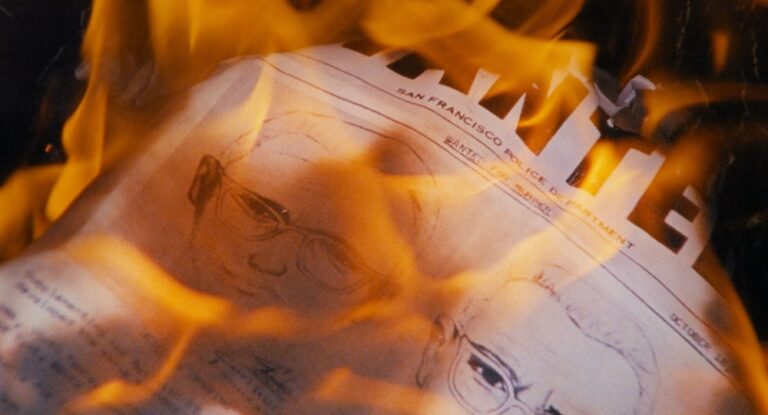But “Zodiac Killer Project” is not that film. Instead, it’s a feature-length autopsy of a documentary that never existed, a self-aware dissection of the true crime genre that’s equal parts insightful, dryly funny, and, at times, frustratingly incomplete.
A Crime Story (Without the Crime)
With this meta documentary film, Shackleton doesn’t just critique the mechanics of true crime storytelling. Instead, he openly toys with them. His film calls out the formula—brooding title cards, foreboding music, shadowy “backtors” (actors only seen from behind)—while using those same techniques in service of something far more abstract.
Over long, static shots of Bay Area landscapes, he recounts his thwarted attempt to adapt “The Zodiac Killer Cover-Up: The Silenced Badge,” a book by former highway patrol officer Lyndon Lafferty, who spent decades convinced he had identified the elusive Zodiac killer. Shackleton had planned a full-fledged documentary on Lafferty’s theories, only to have the family revoke the rights, leaving him with nothing but notes, location scouting photos, and an unshakable sense of unfinished business.
What makes “Zodiac Killer Project” fascinating is how Shackleton channels his failure into something unconventional. Instead of telling Lafferty’s story the way a Netflix series would—cue the murky dramatizations, the emotionally charged narration—he strips true crime of its usual bells and whistles. It’s an experiment in how much storytelling power remains when you remove the tricks that make the genre so compulsively watchable. At times, the result is genuinely fascinating.
More MoMI Coverage: ‘Bonjour Tristesse’ Showcases the Sun-Soaked Melancholy of Beauty Without Depth

The True Crime Genre Under the Microscope
To his credit, Shackleton has a keen eye for how true crime documentaries shape their narratives, often as much through what they omit as what they include. He breaks down the calculated suspense of the genre, where details are doled out like breadcrumbs to keep viewers hooked. His commentary is particularly sharp, calling attention to how some of the true crime series withheld crucial evidence about their subjects’ guilt for dramatic impact—something that would be considered unethical in straight journalism but is standard practice in entertainment.
On another television series, he takes similar scathing aim by pointing out its tonal shift between seasons and its tendency to emphasize ambiguity only when it serves the filmmakers’ desired conclusions. Shackleton doesn’t just criticize these techniques; he actively demonstrates them, manipulating his own audience’s expectations by setting up narrative beats that ultimately go nowhere.
Beyond storytelling structure, he also highlights the visual language that has come to define the genre. He lampoons the use of eerie reenactments, shadowy backtors, and “evocative B-roll” like flickering light bulbs or slow zooms on grainy photographs. These images, he argues, aren’t just stylistic choices—they actively shape how we perceive guilt, innocence, and truth. By pointing out these patterns, “Zodiac Killer Project” forces the viewer to reconsider how much of what we take as ‘documentary truth’ is really just cinematic sleight of hand.
More MoMI Coverage: ‘Windless’ is a Haunting Return to a Home That No Longer Exists
A Filmmaker Caught in His Own Critique
Yet, even as he deconstructs the genre, there’s an unspoken irony in his approach. Shackleton himself was poised to enter this same machine, adapting Lafferty’s book into what he believed would be a major Zodiac documentary. He confesses that true crime’s gravitational pull is hard to resist, and at one point, he admits that had things gone differently, he would have been standing on the other side of this critique. That self-awareness is part of what makes the film so interesting, but it also creates tension—Shackleton is both the critic and the almost-participant, pulling back the curtain on a stage he very nearly performed on himself.
And here’s where the film wobbles. While Shackleton is adept at pulling apart the genre’s tropes, there’s an underlying tension in his approach. He critiques the formula while openly admitting he had intended to play into it. At times, there’s an almost performative detachment, a sense that he wants to position himself above the genre while still mourning the fact that he didn’t get to contribute to it.
This contradiction makes “Zodiac Killer Project” feel, at moments, like a film caught between two impulses: one, to expose the shortcomings of true crime storytelling; and two, to prove that Shackleton’s lost documentary would have been the right kind of true crime film. There’s even a faint but unmistakable bitterness in how he speculates about why the Lafferty family pulled out—suggesting they might have been holding out for a “Tiger King”-level payday—though he never lingers too long on the implication.

‘Zodiac Killer Project’: A Feature-Length Excuse or a Bold Experiment?
For all its cleverness, there’s an unfinished quality to “Zodiac Killer Project.” It sometimes feels like a student spending nearly 90 minutes explaining to the teacher how his dog ate his assignment, rather than simply turning in the work. The film’s intellectual exercises are engaging, but its minimalism can border on tedious. Shackleton’s voiceover, while often amusing, sometimes drifts into a dry, academic monotony, and the film’s commitment to static imagery—even when paired with insightful narration—will definitely test the viewer’s patience. It’s a film that’s as much about not making a movie as it is about the subject itself, and that means it carries the limitations of its own conceit.
Still, there’s something undeniably compelling about it. It takes a risk by rejecting the easy appeal of true crime sensationalism, and in doing so, it offers a rare kind of honesty about the genre’s mechanics. Ultimately, “Zodiac Killer Project” is an odd, self-reflective puzzle of a film—part critique, part confession, part elegy for a project that never was.
Whether that makes it an essential watch or an ambitious curiosity depends on how much you’re willing to buy into its experiment.

“Zodiac Killer Project” screened in this year’s First Look, the annual film showcase of the Museum of the Moving Image (MoMI). The festival runs from March 12 to 16, 2025. Follow us for more coverage.


